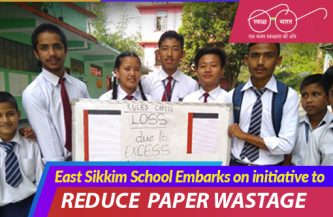Looking back at Re-monetization

Re-monetization is a wicked problem and there is no standard policy prescription available in policy sciences (e.g. economics). This is what has led Amartya Sen to label re-monetization as an “unguided missile”. Conventionally, policy makers deal with tame problems or guided missiles. The target of a guided missile is known in advance, all the possible flight options can be listed out, best flight option can be selected keeping in mind the barriers (e.g. risk from anti-missiles) and we know that the task on hand is accomplished once the target is destroyed. Even if the mission is partially accomplished we can start re-working on another strategy to complete the remaining parts of the mission. Was a guided missile strategy possible in re-monetization? The answer is an unequivocal no, because as the following description shows re-monetization was a wicked problem.
Re-monetization did not have a singular objective or target. The main objective was elimination of black money. Furthermore, being a wicked problem, there was no single or only way of achieving the objective of eliminating black money. In fact, the way to eliminate black money depends on one’s idea of solving it and every policy-maker has an idea of eliminating black money and would have prescribed a way in consonance with her idea of addressing the problem of black money. Importantly, knowing before-hand all possible ways of implementing re-monetization was also not possible because re-monetization required a certain degree of secrecy to be maintained.
The flight path of the re-monetization unguided missile required frequent changes. People tried all types of jugaad to beat re-monetization. As a result initial instructions issued to implement re-monetization became moving targets (again a characteristic of wicked problems) and required constant, real-time adjustments. This led to new daily instructions being issued. While dealing with tame problems, say, a failed experiment in Chemistry hardly has any effects on other experiments or for non-chemists. In re-monetization every instruction led to a corresponding jugaad and these effects (residue in wicked problems) had to be rectified by new instructions/rules. Such frequent changes in strategy and tactics are normal during the process of resolution of wicked problems where strategy and tactics are intermeshed with one another.
The Government did not have the luxury of first designing a re-monetization policy and then implementing it. Policy-making and implementation had to go hand-in-hand. Moreover, all the information was not available before-hand to anticipate all the issues and effects likely to arise as a consequence of the steps taken for re-monetization. Additionally, the Government could not do small experiments before firing the missile, as is possible in guided missiles. Trial and error had to be done at the time of implementation, that is, during the flight of the missile!
When solving mathematical equation one knows when the problem is solved. In wicked problems, such as re-monetization there are no criteria to tell us that the or a solution has been found. One will have to say that some component of re-monetization is done – and this is a matter of political judgment – and another one has to be started. Re-monetization as conceived by Government is part of a larger reform project having several interlinked objectives, which are unfolding over a period of time.
Most important, in wicked problems (re-monetization), achievements cannot be judged as correct-incorrect (true-or-false) as in the determination of a formula of a chemical compound. They cannot be verified by independent agencies based on some established criteria. All persons, groups and political parties are equally equipped, interested, and/or entitled to judge the achievements. Their judgments are likely to differ widely and be in accordance with their personal/group interests, their beliefs and their ideological orientations.
Launch of the unguided missile of re-monetization is generating waves of after-effects, some will continue over extended periods of time. Let us look at some of these effects. The November air pollution in Delhi was at the lowest in the last three years. In two days Airtel payment bank had opened 10,000 accounts. Urban local bodies have reaped a bonanza in unpaid or advance tax/fees collections. Farmers in States have been paid their pending dues in cash by rice millers and other purchasers of agriculture produce. Private, unwritten contracts are often not honoured and there is hardly any speedy recourse for implementation. In informal conversations several people who had to receive contractual payments were paid old dues. A record number of naxals have surrendered in November and there has been a great reduction in stone throwing incidents in Srinagar. Hawala has nearly disappeared from the Indian scene.
Re-monetization is so widely discussed because it took upon itself a string of legacy problems connected to one another and existing at multiple levels in the country. In the ultimate analysis, re-monetization is an anti-corruption instrument. The unearned money was largely kept in higher denominations of Rs. 500 and 1000. These have come into the formal system and this has increased policy options for the Government to pursue the development agenda to increase incomes and generate employment.
(Author is a civil servant. Views are personal)





